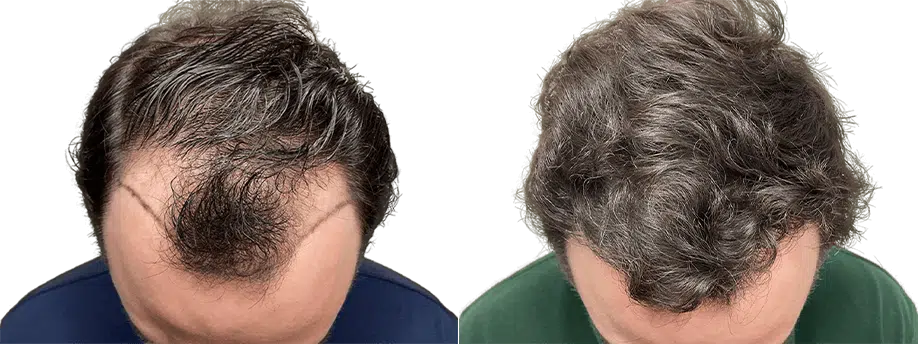Is There A Connection Between Stress And Hair Loss?
Don’t Pull Your Hair Out: How Stress Can Cause Hair Loss
Have you noticed patchy or bald spots on your head? Does brushing or washing your hair result in extreme shedding? The American Academy of Dermatology affirms that it’s completely normal for humans to lose up to 100 hairs a day. However, if you’re worried about an increase in hair loss, it may be time to seek the advice of a hair restoration specialist. According to Mayo Clinic, there are three types of hair loss attributed to stress: Telogen effluvium, Trichotillomania, and Alopecia areata.
We sometimes forget that our hair follicles are alive. However, they do not continuously produce hair – but rather cycle through growth and resting stages. According to the The American Hair Loss Association®, anywhere from 10-20% percent of the scalp’s hair follicles are in a latent state known as “telogen,” when they cease production of hair fibers.
If we eat the proper vitamins, get plenty of rest, and treat them properly, they thrive and grow; however, when we neglect them or experience extreme anxiety, they can become lackluster or sparse. Telogen Effluvium arises when emotional or physical stress essentially put these follicles to “sleep”. The result is a loss of hair from everyday activities like combing or washing. “Effluvium” literally means an outflow. The AHLA notes that many dermatologists have linked stress with a negative shift in hair follicle biochemistry.
When the body undergoes extreme stress, the immune system will attack the hair follicles, resulting in a type of hair loss called Alopecia. The disorder leaves behind round, hairless patches on the scalp. While most people with Alopecia will eventually grow their hair back, in 10% of cases it will remain absent. Those with a family history of the condition, those prone to allergies, and people with an autoimmune disease are easier targets for Alopecia, and may experience a permanent loss of hair.*
The above conditions are caused by environmental and genetic factors, but sometimes, hair loss is caused by one physically removing large quantities of their own hair. It’s a behavior that’s more common than you might think; the TLC Foundation for Body-Focused Repetitive Behaviors states that Trichotillomania, or “Pulling Disorder” is experienced by 1 or 2 out of every 50 people. Classified as a self-grooming behavior, Trichotillomania falls into what the DSM categorizes as “Obsessive Compulsive and Related Disorders”.
Reducing stress can stop your scalp from shedding hair; but for many, this is easier said than done. Everydayhealth.com suggests exercising, relaxation techniques, yoga, music therapy, and social interactions, as ways of coping with stressors that may be ailing you. For those experiencing TE, treating hair gently – as if it’s spun from gold – can help it grow strong and long. As previously mentioned, your diet also plays a major factor in hair growth. Foods rich in iron, folic acid, and B12 are sure to keep follicles sprouting.
With the modern advancements in micro-grafting technology, there are now many safe & proven treatments to successfully address all types of hair loss. Stop stressing about your tresses. If you’re suffering from lackluster locks, and would like more information about your hair treatment options, contact MaXiM Hair Restoration today. MHR offers complimentary hair transplant consultations, and has locations in 6 major US cities – making them a smart & simple choice.
* According to WebMD

